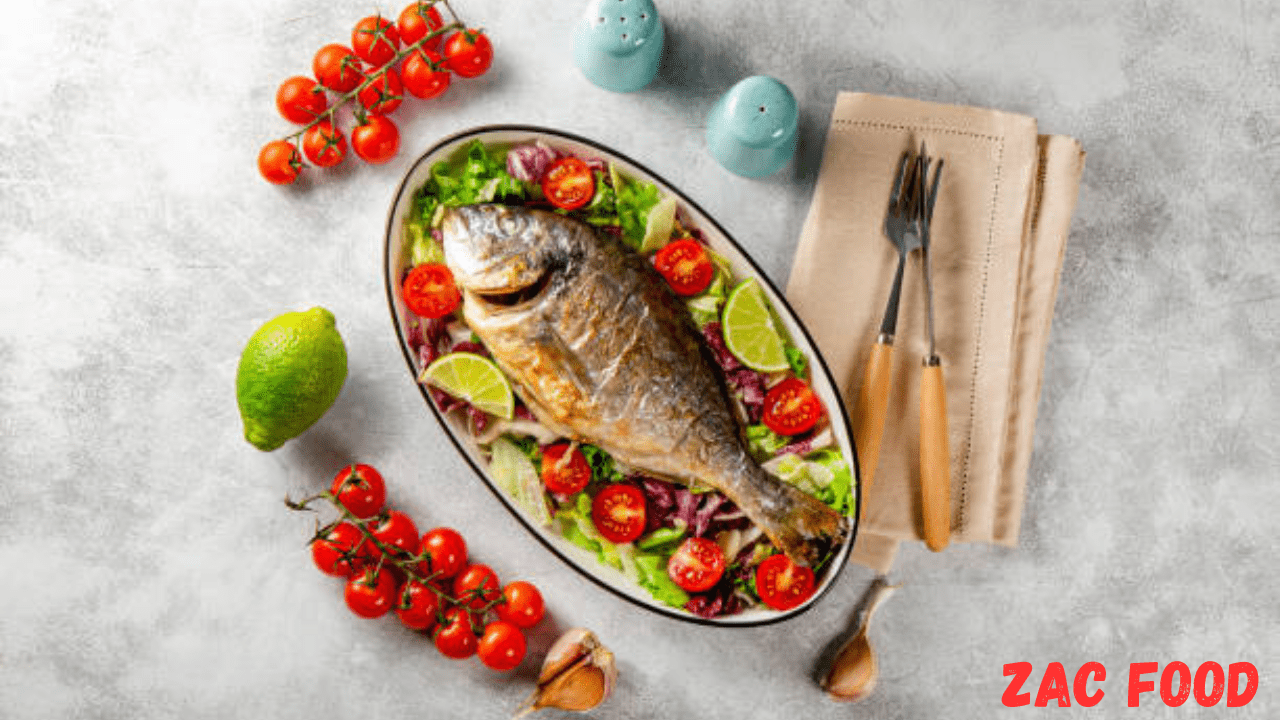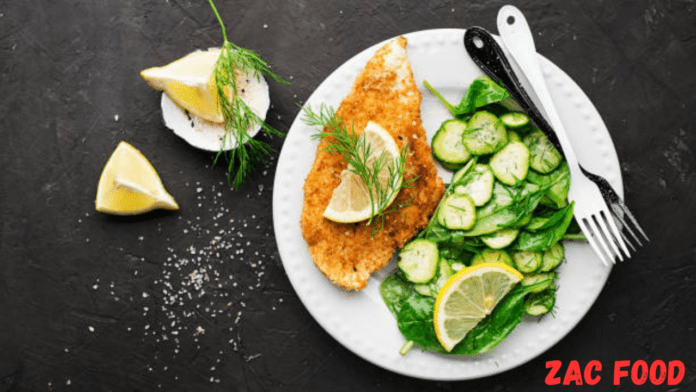Keeping fish healthy and happy requires more than just maintaining clean water and providing a good tank environment—it starts with what you feed them. If you’ve been relying on store-bought fish food, you might be missing out on some key benefits of homemade options. Crafting your own fish food recipe can help you better meet the nutritional needs of your aquatic friends. Plus, it gives you full control over the ingredients, ensuring a healthier, more balanced diet.
In this guide, we’ll explore why homemade fish food is an excellent option, how to make it, and what your fish needs to thrive.

Why Choose Homemade Fish Food?
Feeding your fish homemade food has several advantages over commercial options. When you make your own fish food recipe, you can:
- Control the ingredients: You decide what goes in, which means no preservatives, artificial colors, or low-quality fillers.
- Tailor the food to your fish’s needs: Different species have different dietary requirements. You can create recipes specifically for herbivores, carnivores, or omnivores.
- Avoid harmful additives: Some commercial fish foods contain chemicals that may negatively affect fish health over time. Homemade food eliminates that risk.
With homemade food, you are in charge of ensuring your fish get the most nutritious meal possible.Understanding Your Fish’s Nutritional Needs
Not all fish are the same, and neither are their diets. Whether you’re feeding freshwater fish, saltwater fish, or a mix, understanding their basic nutritional needs is crucial to crafting the perfect fish food recipe. Here’s what fish need to thrive:
- Proteins: Essential for growth and muscle development, especially for carnivorous species. Protein should be a primary component in their diet.
- Fats: Healthy fats support energy and bodily functions. Fish need fats for buoyancy and to maintain healthy skin and scales.
- Vitamins and Minerals: Just like humans, fish need a balanced intake of vitamins (especially vitamins C and D) and minerals (like calcium and phosphorus) to maintain strong bones, a robust immune system, and proper organ function.
Understanding these basic nutritional requirements will help you choose the right ingredients for your homemade fish food.
Common Ingredients in Homemade Fish Food
When you make your own fish food recipe, you have the opportunity to mix and match various high-quality ingredients. Here’s a list of common components used in homemade fish food:
- Protein Sources: Fish fillets, shrimp, krill, and even egg yolk are great for carnivorous fish. These provide the essential protein for their growth and energy.
- Vegetables: Leafy greens like spinach, romaine lettuce, peas, and zucchini are excellent for herbivorous or omnivorous fish. These vegetables add essential fiber and nutrients.
- Healthy Fats: Adding fish oil or krill oil boosts omega-3 fatty acids, which promote growth and healthy scales.
- Vitamins and Minerals: Spirulina powder, calcium, and vitamin supplements can be mixed in for an extra boost.
These ingredients are easy to find and offer a well-rounded nutritional profile for most fish species.
Step-by-Step Guide to Making Fish Food at Home
Now that you know the basic nutritional needs and ingredients, let’s walk through how to make a fish food recipe from scratch.
Step 1: Choosing the Right Ingredients
Before you begin, decide what type of fish food you need based on the species you have. For example, carnivores like bettas or oscars require more protein, while herbivores like plecos need more plant-based ingredients.
Choose fresh, high-quality ingredients, and avoid anything that might be harmful to fish, like excessive amounts of fat or chemicals.
Step 2: Preparing the Ingredients
Start by washing all vegetables thoroughly to remove any dirt or chemicals. You can lightly steam or blanch tougher vegetables like spinach or peas to soften them, making it easier for fish to eat. For protein sources like shrimp or fish fillets, make sure they’re fresh and cut into small, manageable pieces.
Step 3: Mixing the Ingredients
Once your ingredients are prepped, blend them together. Use a food processor to combine the proteins, vegetables, and any additional supplements like spirulina or fish oil. The texture should be soft but not too watery, similar to a thick paste.
You can use gelatine or agar-agar as a binder to hold the mixture together and form small pellets or cubes.
Step 4: Shaping and Storing the Food
Roll the mixture into small balls, or pellets, or press it into ice cube trays for easy portioning. Once shaped, freeze the food to keep it fresh for longer. Most homemade fish food can last several months in the freezer when properly stored in an airtight container.
Top 3 Fish Food Recipes for Healthier, Happier Fish
Here are three simple and nutritious fish food recipes you can try at home:
Recipe 1: High-Protein Fish Food for Carnivores
- Ingredients: Shrimp, white fish fillets, peas, spirulina powder, and fish oil.
- Instructions: Blend all ingredients into a fine paste, using a bit of gelatine to bind them. Shape into pellets and freeze.
Recipe 2: Veggie-Packed Food for Herbivores
- Ingredients: Spinach, peas, zucchini, spirulina powder, and a small amount of fish oil.
- Instructions: Blanch the vegetables, blend them with the supplements, and shape the mixture into small pellets. Freeze for storage.
Recipe 3: Balanced Diet for Omnivores
- Ingredients: Shrimp, spinach, peas, fish oil, and calcium powder.
- Instructions: Mix protein sources with the vegetables, bind with gelatine, and freeze in portioned pellets.
These recipes can be adapted based on the specific needs of your fish, but they cover the basics for carnivores, herbivores, and omnivores.
Avoiding Common Mistakes in Homemade Fish Food
When making homemade fish food, there are a few mistakes to avoid:
- Overfeeding: Even if your homemade fish food recipe is nutritious, overfeeding can cause water quality issues and stress your fish.
- Nutritional Imbalance: Be mindful of balancing protein, fats, and fiber-based on your fish’s species and needs.
- Improper Storage: If not stored correctly, homemade food can spoil and harm your fish. Always freeze in small batches.
Tips for Storing Homemade Fish Food
To ensure your homemade fish food stays fresh, freeze it immediately after preparing. It should be kept in ice cube trays or tiny, sealed containers. This makes it easier to feed your fish without thawing a large batch all at once. Homemade fish food can last up to six months in the freezer if stored properly.
Signs Your Fish Are Healthier and Happier
Once you start using a homemade fish food recipe, you’ll notice positive changes in your fish:
- Brighter colors: Healthy fish have vibrant, rich colors.
- More activity: Fish fed a proper diet are more energetic and curious in their tank.
- Better growth: You may see steady, healthy growth over time as your fish get the right nutrients.
These are great indicators that your homemade fish food is doing its job!
Common Additives to Boost Fish Food Nutrition
You can enhance your homemade fish food recipe by adding:
- Spirulina: A superfood that boosts immune function and adds essential vitamins.
- Omega-3 Fish Oil: Promotes healthy scales and brain function.
- Calcium: Helps strengthen bones and scales, which is especially important for young or growing fish.
These additives can give your fish an extra nutritional boost.
How Often Should You Feed Your Fish Homemade Food?
Feeding frequency depends on your fish species and their natural eating habits. Carnivorous fish typically need less food but in more concentrated doses, while herbivorous fish graze throughout the day. It’s essential to feed the right portions and avoid overfeeding.
Adjusting the Recipe Based on Fish Age and Species
Different fish species, as well as juvenile vs. adult fish, have varying dietary needs. Younger fish require more protein for growth, while adult fish benefit from a balanced mix of nutrients. Tailor your fish food recipe accordingly to support their development and well-being.
Comparing Homemade Fish Food with Commercial Options
While commercial fish foods are convenient, they often contain fillers, preservatives, and lower-quality ingredients. Homemade food is typically fresher, more nutritious, and customizable for your specific fish’s needs. Plus, It should be stored in small, airtight containers or ice cube pans.
The Role of Variety in a Fish’s Diet
Just like us, fish benefit from variety in their diet. Rotating different recipes or changing ingredients helps provide a balanced range of nutrients, preventing dietary boredom and ensuring that your fish remains healthy.
Read More: Cultural Recipes Jollof Rice: The Dish That Defines African Heritage
FAQs
What is the best homemade food for fish?
The best homemade fish food includes a balanced mix of protein (shrimp, fish), vegetables (spinach, peas), and healthy fats (fish oil).
How to make homemade fish feed?
To make homemade fish feed, blend protein sources, vegetables, and supplements, shape them into pellets, and freeze them for storage.
What are the best ingredients for fish food?
The best ingredients for fish food include shrimp, fish fillets, peas, spinach, spirulina, and fish oil for balanced nutrition.
What is the best food to feed my fish?
The best food for your fish depends on the species, but a mix of protein, vegetables, and fats ensures proper nutrition.
Conclusion
Creating your own fish food recipe is a rewarding way to ensure your fish get the best possible diet. It allows you to customize their meals based on their specific needs, leading to healthier, more active fish. With a little effort and the right ingredients, you can boost your fish’s happiness and lifespan. Give homemade fish food a try and watch your fish thrive!


[…] The Best Fish Food Recipe for Healthier, Happier Fish! […]